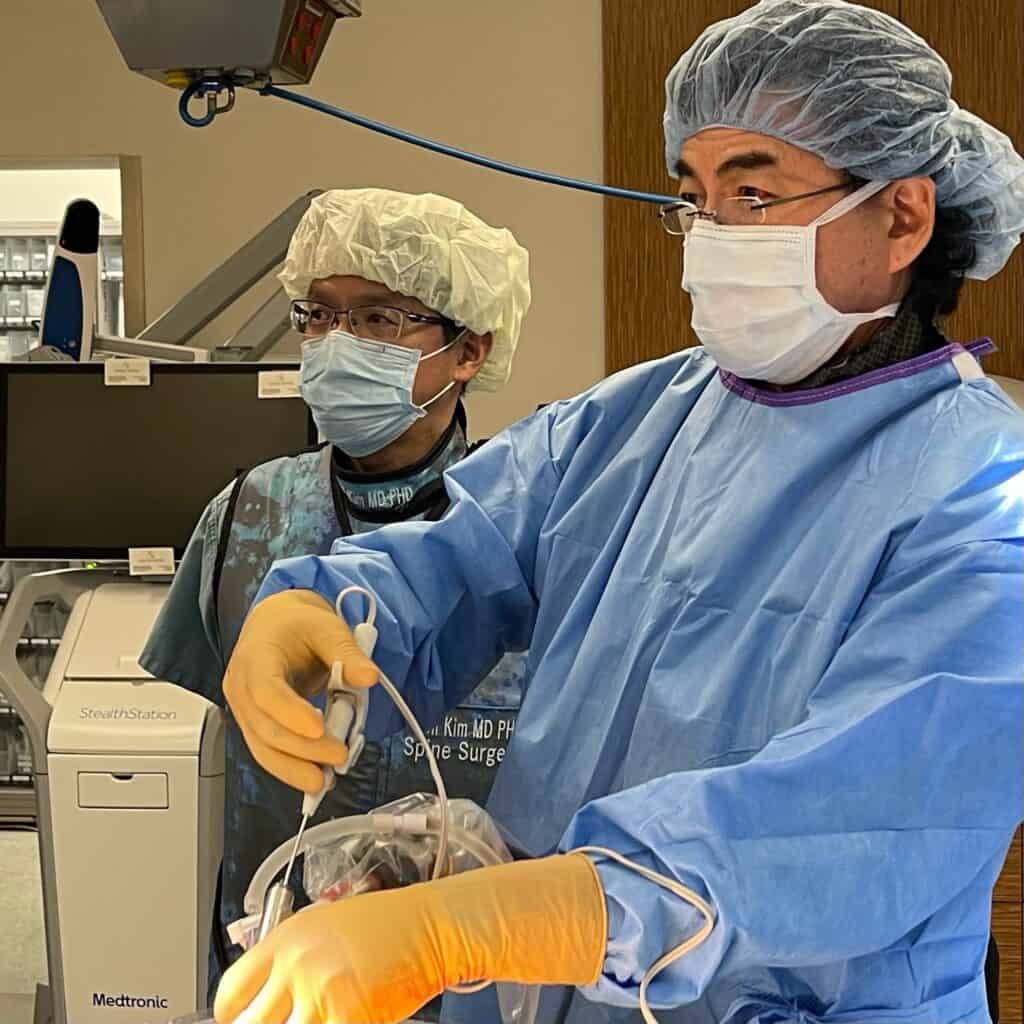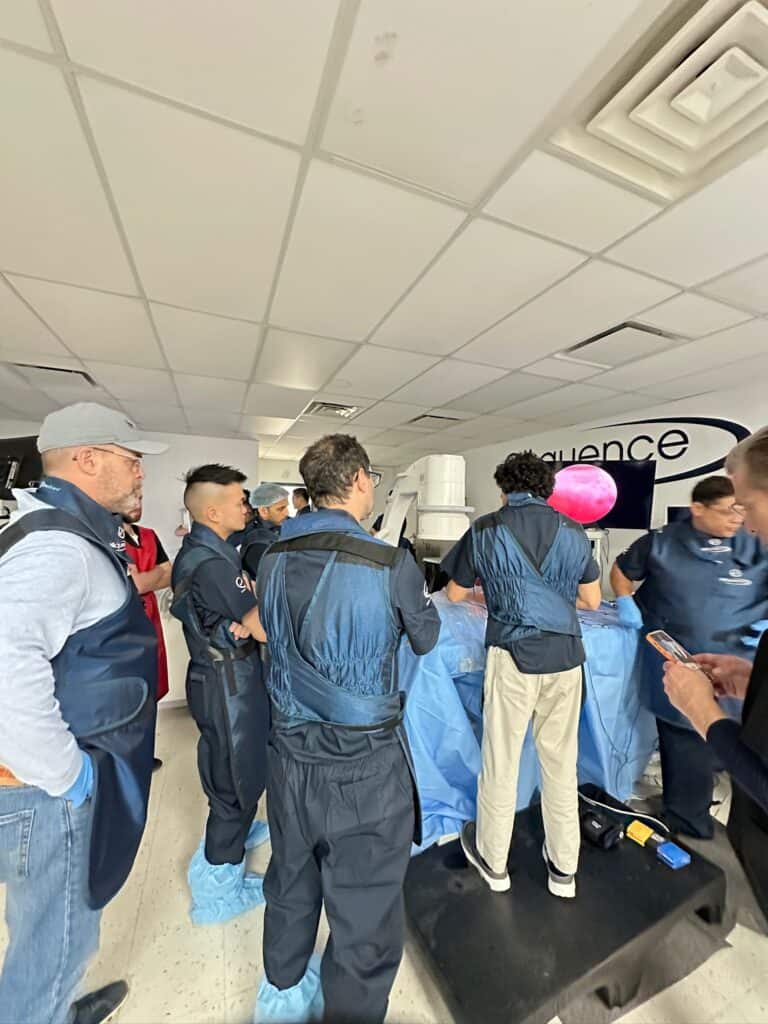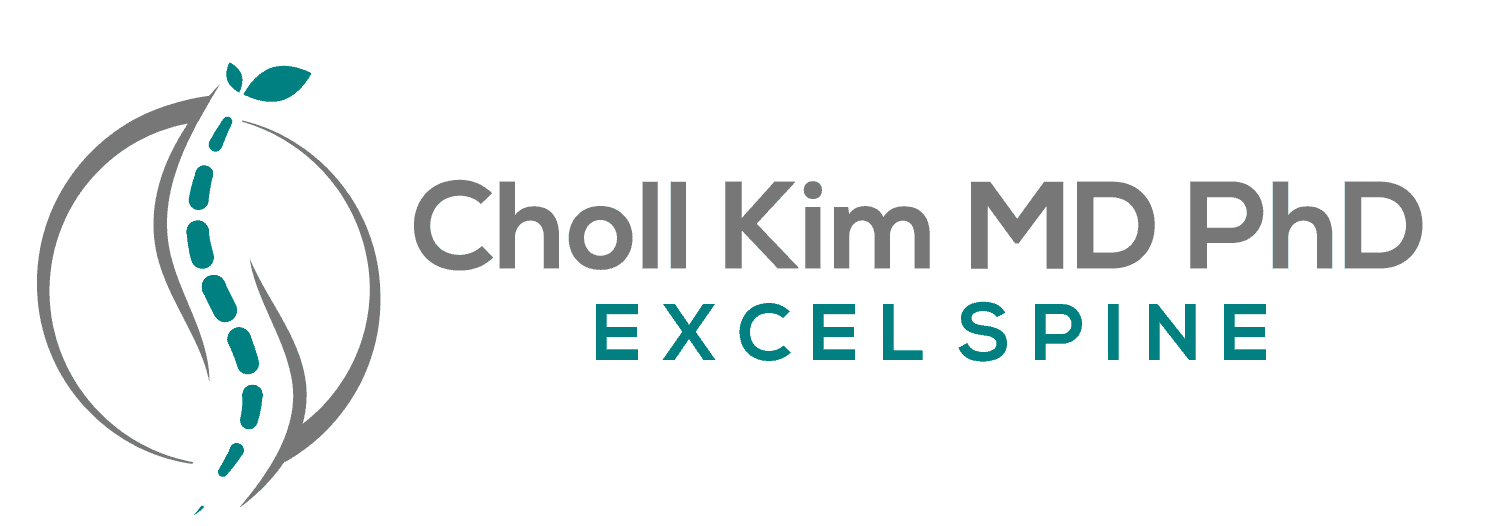
Introduction
Spine surgery has advanced significantly, shifting from traditional open procedures to minimally invasive techniques. Among these, endoscopic spine surgery offers substantial benefits, including reduced tissue damage, faster recovery, and minimal post-operative pain.
Despite its advantages, widespread adoption remains slow due to the steep learning curve associated with the procedure. Endoscopic spine surgery demands new skills, extensive training, and a shift in surgical approach. This article explores the major obstacles surgeons face in adopting endoscopic spine surgery and strategies to overcome them.
Further supporting this effort, the new Elliquence West Coast Bioskills Training Facility is opening in El Segundo, California. This state-of-the-art center will serve as a premier site where I will regularly teach and mentor surgeons, helping them develop the skills needed for successful endoscopic spine procedures.
Understanding the Learning Curve in Endoscopic Spine Surgery
The learning curve in surgery refers to the time and experience required for a surgeon to achieve proficiency in a new technique while ensuring patient safety. Endoscopic spine surgery presents a particularly steep learning curve due to its unique instrumentation, visualization methods, and technique differences compared to traditional procedures.
Unlike open or minimally invasive spine surgery, endoscopic approaches require indirect visualization via a camera and precise instrument handling through small working channels. This transition can be challenging for experienced surgeons trained in conventional techniques.
Major Challenges in Adopting Endoscopic Spine Surgery

1. Technical and Skill Barriers
Endoscopic spine surgery requires a completely different set of motor skills compared to traditional techniques. Instead of direct visualization, surgeons rely on a screen, which demands advanced hand-eye coordination and precise maneuvering.
Key technical challenges include:
Managing complications such as dural tears or nerve injuries in a confined space
Navigating narrow working channels with limited visualization
Learning indirect decompression techniques
Adapting to reduced tactile feedback
2. Extensive Training and Experience Requirements
Mastering endoscopic spine surgery takes significant time and practice. Unlike open surgery, which is routinely taught in residency, endoscopic techniques require additional specialized training, mentorship, and case volume.
Challenges include:
- Lack of standardized training programs across institutions
- Limited hands-on opportunities, as endoscopic procedures are less common
- A high volume of cases (50-100) needed for proficiency
- The risk of increased complications during early cases
3. Resistance from Experienced Surgeons
Many experienced surgeons are hesitant to transition to endoscopic techniques due to:
- Fear of complications during the learning phase
- Belief that traditional methods are superior for complex cases
- Psychological reluctance to relearn techniques after years of practice
- Concern that longer initial operating times may affect efficiency
4. Institutional and Financial Constraints
Hospitals and surgical centers may be slow to adopt endoscopic spine surgery due to:
- High costs of purchasing specialized endoscopic equipment
- Limited availability of trained mentors for guidance
- Administrative resistance, favoring proven techniques
- Inadequate insurance reimbursement, as some providers still classify endoscopic spine surgery as experimental
5. Patient Awareness and Acceptance
Patients often associate spine surgery with large incisions and long recovery times, making them hesitant to choose endoscopic procedures. Overcoming this requires:
- Educating patients on the benefits of minimally invasive techniques
- Addressing concerns about safety and long-term outcomes
- Ensuring patients feel confident in their surgeon’s experience
My Strategy for Improving First-Case Success
Recognizing these challenges, I have developed a structured campaign to increase first-case success rates and support surgeons transitioning to endoscopic spine surgery. My approach focuses on:
- Optimized preoperative planning to ensure smooth execution
- Hands-on mentorship with expert faculty during training workshops
- Step-by-step case selection guidance, starting with simpler procedures before progressing to more complex cases
- A support network of experienced endoscopic spine surgeons to provide real-time assistance and feedback
- Access to the latest endoscopic spine surgical tools, including the endoscopic bone blade—a game-changer in minimally invasive spine surgery
With these measures, new adopters can avoid common pitfalls and accelerate their progress in learning endoscopic spine techniques.

Click here to check out a short video on making the first case go well.
Strategies to Overcome the Learning Curve
1. Standardized Training Programs and Fellowships
A structured educational approach is essential for improving proficiency in endoscopic spine surgery. Key components include:
- Hands-on training in cadaver labs
- Step-by-step progression from simple to complex cases
- Live case demonstrations and mentorship
- Certification programs to standardize skills
2. Gradual Transition from Traditional to Endoscopic Techniques
Rather than immediately switching to full endoscopic procedures, a phased approach is more effective:
- Starting with simpler cases like lumbar disc herniations
- Combining traditional minimally invasive techniques with endoscopic approaches
- Using fluoroscopy-guided procedures initially before relying solely on endoscopic visualization
3. Institutional Support and Investment
Hospitals and surgical centers should actively support the transition to endoscopic spine surgery by:
- Investing in specialized equipment and training programs
- Encouraging a collaborative learning environment
- Implementing proctoring programs, where experienced surgeons oversee new adopters
4. Surgeon Collaboration and Knowledge Sharing
One of the most effective ways to shorten the learning curve is through peer mentorship and continuous education:
- Attending national and international spine surgery conferences
- Participating in peer-to-peer training and workshops
- Engaging in online forums and case discussions
The Future of Endoscopic Spine Surgery and Skill Development
As technology advances, training and skill development in endoscopic spine surgery will become more accessible. Some key future trends include:
- More hands-on workshops and simulation-based training
- Improved instrument designs that enhance ease of use
- Broader insurance coverage, encouraging hospitals to invest in training programs
With time, as more surgeons gain proficiency, the barriers to adoption will gradually decrease, making endoscopic spine surgery a mainstream treatment option for spinal conditions.
Conclusion
Endoscopic spine surgery offers tremendous potential to improve patient outcomes, reduce surgical trauma, and accelerate recovery times. However, its steep learning curve remains a major challenge preventing widespread adoption.
With the opening of the Elliquence West Coast Bioskills Training Facility, and my campaign to make the first-case go well, there has never been a better time to learn and adopt endoscopic spine techniques. By investing in structured training, fostering collaboration, and securing institutional support, surgeons can successfully transition to endoscopic spine surgery while maintaining patient safety.
Interested in training opportunities with me? Click here for and submit your information to be scheduled for upcoming training labs!
